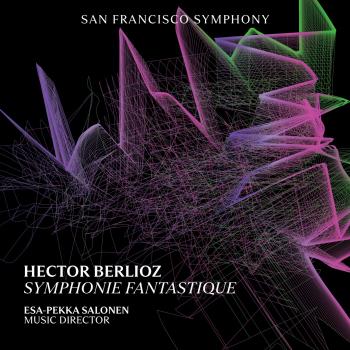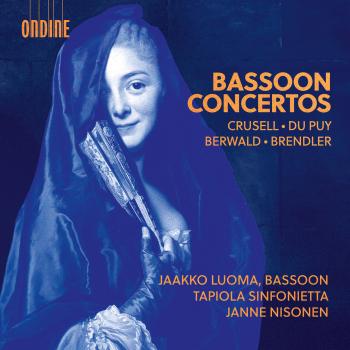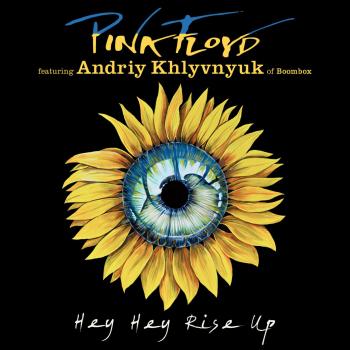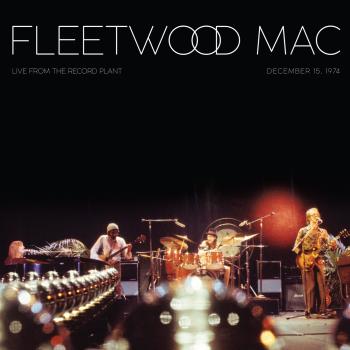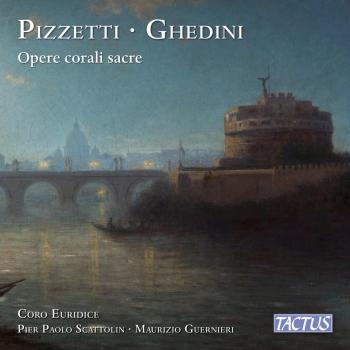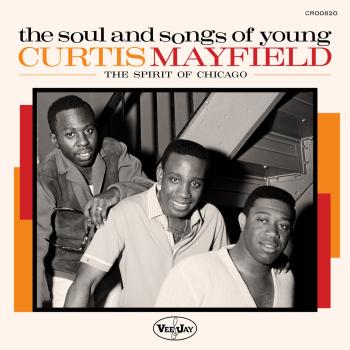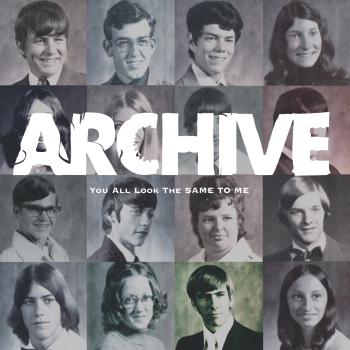
Live At The Bowl '68 The Doors
Album info
Album-Release:
1968
HRA-Release:
09.11.2012
Album including Album cover
I`m sorry!
Dear HIGHRESAUDIO Visitor,
due to territorial constraints and also different releases dates in each country you currently can`t purchase this album. We are updating our release dates twice a week. So, please feel free to check from time-to-time, if the album is available for your country.
We suggest, that you bookmark the album and use our Short List function.
Thank you for your understanding and patience.
Yours sincerely, HIGHRESAUDIO
- 1 Show Start/Intro 00:18
- 2 When The Music's Over 12:52
- 3 Alabama Song 01:33
- 4 Back Door Man 02:33
- 5 Five To One 01:28
- 6 Back Door Man 01:22
- 7 The Wasp 01:51
- 8 Hello, I Love You 02:14
- 9 Moonlight Drive 03:20
- 10 Horse Latitudes 01:07
- 11 A Little Game 01:20
- 12 The Hill Dwellers 02:21
- 13 Spanish Caravan 03:04
- 14 Hey, What Would You Guys Like To Hear? 00:40
- 15 Wake Up! 01:30
- 16 Light My Fire 09:32
- 17 Light My Fire 00:38
- 18 The Unknown Soldier 04:42
- 19 The End 01:01
- 20 The End 17:31
Info for Live At The Bowl '68
„Die Live-Performances der Doors waren eine schamanistische Reise in die Dunkelheit des Rock'n'Roll-Theaters. Eine wirbelnde Mixtur aus Rock'n'Roll-Hitze, Poesie, Gefahr, Drama und entfesselter musikalischer Virtuosität. Das Konzert zeigt The Doors auf der Höhe ihrer Magie.' - Jeff Jampool, Doors-Manager und Producer des Films Live At The Bowl.
Als Jim Morrison, John Densmore, Robby Krieger und Ray Manzarek am 5. Juli 1968 die Bühne des Hollywood Bowl betraten, entfachten sie nur einen Tag nach den offiziellen Feierlichkeiten des Amerikanischen Unabhängigkeitstages ihr ureigenstes Feuerwerk. Über eine Stunde lang präsentierten sie ein denkwürdiges Repertoire, das neben Damals-Schon-Klassikern wie When The Music's Over, Back Door Man und Light My Fire auch seinerzeit brandneue Songs wie Hello, I Love You enthielt, das nur wenige Wochen nach dem Konzert auf Platz 1 der US-Charts einstieg.
Der legendäre Auftritt wurde mitgefilmt und gilt bis heute nicht nur als eine der besten Performances, die The Doors je abgeliefert haben - es ist auch das einzige Doors-Konzert, das je in ganzer Länge mitgefilmt wurde. Trotzdem mussten die Fans bei der später erfolgten Veröffentlichung des Home-Videos empfindliche Abstriche hinnehmen, denn aus technischen Gründen wurden Hello, I Love You, The W. A.S. P. (Texas Radio And The Big Beat) und Spanish Caravan nicht im Film aufgenommen. Die 1987 erschienene Audio-CD enthielt überdies nur 7 von 16 Songs, so dass man sich mit gut der Hälfte des eigentlichen Konzerts zufrieden geben musste, zumal die Reihenfolge der Songs ebenfalls nicht der der Performance entsprach. Zwar fand man Spanish Caravan auf dem Album, doch Kult-Performances wie When The Music's Over, W. A.S. P., Hello, I love You waren noch immer unzugänglich. Der Doors-Superhit Light My Fire erschien nur in einem speziellen Edit, der lediglich einen Ausschnitt der Performance repräsentierte.
Diese für jeden Fan unhaltbare Situation hat sich nun schlagartig geändert: Mit der vollständigen Neubearbeitung des Films und der Audiospuren sorgt die High-End-Technik dafür, dass zum ersten Mal das gesamte Konzert in seiner Vollständigkeit zu haben ist. Sowohl der Konzertfilm als auch der Audiomitschnitt wurden akribisch und mit dem Einsatz modernster Mittel so authentisch wie möglich überarbeitet. Für die Überarbeitung der Filmaufnahmen zog Jeff Jampool die Original-Negativrollen der Kameras heran, wodurch er unter Bewahrung der ursprünglichen Aufnahmen die visuelle Qualität enorm steigern konnte.
Die Audiospuren wurden von Doors-Producer Bruce Botnik auf der Grundlage der Multi-Track-Tapes restauriert und bringen den Hörer im Sound so dicht an die Band heran wie nie zuvor: „Es klingt jetzt so, als würde man direkt neben Jim Morrison, John Densmore, Robby Krieger und Ray Manzarek auf der Bühne stehen,' so Botnik. Gerade für den Audio-Freund ist der Gewinn immens, denn die magische musikalische Dramaturgie des Konzerts ist nur in der vollständigen Performance, in der ursprünglichen Songreihenfolge und im differenziertem Klangbild erfassbar.
Jim Morrison und The Doors beginnen das Konzert mit einer enorm freien Version von When The Music's Over, die den Zuschauer gleich mit langen und spannungsreichen Solosequenzen einlullt. Alabama Song, Backdoor Man und Five To One gehen fast nahtlos ineinander über und münden dann in die Backdoor Man-Reprise. Hier ist die Band endgültig warmgespielt, und auf den Genießer wartet die neu referierte Sequenz The W. A.S. P. (Texas Radio And The Big Beat) und Hello, I Love You. Wie bereits von der ursprünglichen Filmversion gewohnt, geht es erst dann mit Moonlight Drive weiter und steigert sich, über Spanish Caravan (Track 13), bis zum furiosen Finale mit The End. Morrison selbst gibt sich außergewöhnlich exaltiert, die Band in seinem Rücken stützt den begnadeten Entertainer mit ihrem virtuos wie vital dargebotenem Spiel.
Ein Konzert, an dem sich die Doors auf dem Höhepunkt ihrer Live-Fähigkeiten zeigen, einige Monate, bevor die desaströse Abstiegsphase beginnt, die The Doors am Ende untergehen, aber auch unsterblich werden lassen sollte.
Als Jim Morrison am 3. Juli 1971 in einem Pariser Hotel verstarb, war nach Jimi Hendrix und Janis Joplin die letzte musikalische Ikone der späten Sechziger von dieser Welt gegangen. Doch das Vermächtnis der Doors, das von Densmore, Krieger und Manzarek seit Jahrzehnten erfolgreich vertreten wird, hat bereits mehrere musikalische Epochen und Modeströmungen überlebt. Warum das so ist - Live At The Bowl '68 bringt es auf den Punkt.
Digitally remastered.
With an intoxicating, genre-blending sound, provocative and uncompromising songs, and the mesmerizing power of singer Jim Morrison's poetry and presence, The Doors had a transformative impact not only on popular music but on popular culture.
The Doors' arrival on the rock scene in 1967 marked not only the start of a string of hit singles and albums that would become stone classics, but also of something much bigger - a new and deeper relationship between creators and audience. Refusing to be mere entertainers, the Los Angeles quartet relentlessly challenged, confronted and inspired their fans, leaping headfirst into the heart of darkness while other bands warbled about peace and love. Though they've had scores of imitators, there's never been another band quite like them. And 40 years after their debut album, The Doors' music and legacy are more influential than ever before.
Morrison's mystical command of the frontman role may be the iconic heart of The Doors, but the group's extraordinary power would hardly have been possible without the virtuosic keyboard tapestries of Ray Manzarek, the gritty, expressive fretwork of guitarist Robby Krieger and the supple, dynamically rich grooves of drummer John Densmore. From baroque art-rock to jazz-infused pop to gutbucket blues, the band's instrumental triad could navigate any musical territory with aplomb - and all three contributed mightily as songwriters.
The group was born when Morrison and Manzarek - who'd met at UCLA's film school - met again, unexpectedly, on the beach in Venice, CA, during the summer of 1965. Though he'd never intended to be a singer, Morrison was invited to join Manzarek's group Rick and the Ravens on the strength of his poetry. Krieger and Densmore, who’d played together in the band Psychedelic Rangers, were recruited soon thereafter; though several bassists auditioned of the new collective, none could furnish the bottom end as effectively as Manzarek's left hand. Taking their name from Aldous Huxley's psychotropic monograph The Doors of Perception, the band signed to Elektra Records following a now-legendary gig at the Whisky-a-Go-Go on the Sunset Strip.
Their eponymous first album, released in January 1967, kicked off with "Break on Through (to the Other Side)" and also featured the chart smash "Light My Fire", the scorching "Back Door Man" and the visionary masterpiece "The End". The Doors arrived fully formed, capable of rocking the pop charts and the avant-garde with one staggering disc. Before '67 was over, they'd issued the ambitious follow-up Strange Days, with such gems as "Love Me Two Times", "People
Are Strange" and "When the Music's Over".
Next came 1968's Waiting for the Sun, boasting "Hello, I Love You", "Love Street" and "Five to One". Over the next few years they minded over new territory on such albums as 1969's The Soft Parade (featuring "Touch Me" and "Tell All the People"), 1970's Morrison Hotel (which includes "Roadhouse Blues", "Peace Frog" and "Queen of the Highway") and 1971's L.A. Woman (boasting "Rider's on the Storm", "Love Her Madly" and the title track).
They released six studio albums in all, as well as a live album and a compilation, before Morrison's death in 1971. their electrifying achievements in the studio and onstage were unmatched in the annals of rock; and though Morrison's death meant the end of an era, Manzarek, Krieger and Densmore collaborated on two more original Doors albums, Other Voices and Full Circle, and a set of tracks they composed to accompany Morrison's 1969 recording of his poetry, released in 1978 as An American Prayer. They also pursued individual music projects, books, theatrical productions and other enterprises - and remain restlessly creative to this day.
In the decades since the Doors' heyday, the foursome has loomed ever larger in the pantheon of rock - and they remain a touchstone of insurrectionary culture for writers, activists, visual artists and other creative communities. Their songs, featured in an ever-increasing number of films, TV shows, video games and remixes, always sound uncannily contemporary. No matter how the musical and cultural tides turn, The Doors will always be ready to help a new wave of listeners break on through to the other side. (Source: jam inc.)
This album contains no booklet.


